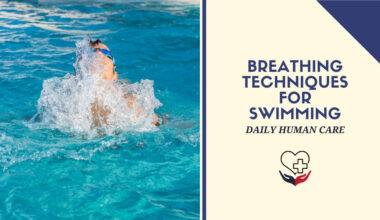Table of Contents
Sore Muscle: Sports Massage Techniques to Relieve them
As an athlete, you push your body to the limit and experience muscle soreness on a regular basis. While rest and icing injuries are common remedies, sports massage techniques can provide faster relief from discomfort and get you back to peak performance. A skilled massage therapist uses targeted methods, such as those offered by professionals at happipuncture.co.nz, to relax tight muscles and break up knots of tension in areas of concern. By applying the proper amount of pressure to specific points, a massage can increase blood flow to problem spots, reducing inflammation and speeding the healing process. With a variety of techniques like trigger point therapy, deep tissue massage, and cross-fiber friction, a sports massage session helps alleviate soreness from intense workouts or minor injuries. Discover how these therapeutic techniques can have you recovering quicker and training harder.





What Is Sports Massage Therapy?
Sports massage therapy employs specific massage techniques to help prevent injuries, prepare the body for athletic activity and aid muscle recovery after a workout.
- What exactly is sports massage? It is a form of massage geared toward athletes that uses targeted massage techniques to help improve athletic performance, endurance, and mobility. Sports massage therapy helps warm up muscles prior to activity and also aids in recovery after activity.
- The benefits of sports massage include:
- Increased range of motion and flexibility. Massage helps loosen tight muscles and connective tissue, allowing for a greater range of movement.
- Improved circulation. Massage stimulates blood flow to the muscles. This helps deliver oxygen and nutrients to the muscles while also removing waste products.
- Reduced muscle tension and spasms. Sports massage helps relax overused muscles and relieve spasms. This can help prevent or relieve cramps.
- Improved muscle recovery. Massage helps flush metabolic waste from muscles and reduces inflammation, helping muscles recover faster after a workout or athletic event.
- Sports massage techniques like effleurage, petrissage, friction, and trigger point therapy are used to warm up muscles, increase range of motion, flush out waste products, and relieve tension. When received regularly, sports massage therapy can significantly help improve athletic performance and endurance.
In summary, sports massage employs specialized techniques to prepare athletes for activity, improve flexibility and range of motion, aid muscle recovery, and enhance endurance and performance. By increasing blood flow and relieving muscle tension, sports massage helps athletes reach peak performance and stay injury-free.
Benefits of Sports Massage for Athletes
As an athlete, receiving sports massage therapy on a regular basis provides both physical and mental benefits to improve your performance and recovery.

Physically, sports massage helps relieve tight, sore muscles and connective tissue. By applying pressure to specific areas of the body, sports massage can help relax tight muscles caused by repetitive motion or overuse. This helps increase range of motion and flexibility, allowing you to perform at your best.
Sports massage also helps flush metabolic waste products like lactic acid from your muscles. This can reduce delayed onset muscle soreness after intense training or competition.
Mentally, sports massage provides stress and anxiety relief. The physical act of receiving massage therapy releases endorphins that activate the body’s relaxation response, lowering levels of stress hormones like cortisol. This helps you achieve an optimal psychological state for peak performance and recovery.
- Regular sports massage sessions allow the massage therapist to become attuned with your muscle tone and tension levels. They can then customize treatment based on your body’s changing needs during training, competition season, and off-season. Having a massage therapist who understands your body and performance goals will help you get the most benefit from each session.
In summary, incorporating regular sports massage therapy into your training program provides both physical and mental benefits for athletes. By relieving tight muscles, reducing pain, improving range of motion, and lowering stress levels, sports massage helps you achieve peak performance, faster recovery, and sustained athletic success over the long run.
Common Sports Injuries That Can Be Treated With Massage

Muscle Strains
Muscle strains, also known as pulls or tears, are common sports injuries that can benefit from massage therapy. When muscles are stretched beyond their limits, the muscle fibers can tear. Massage helps relax the muscles and break up scar tissue formation. It also increases blood flow to the area, which reduces inflammation and speeds healing.
Tendinitis
Tendinitis refers to inflammation of the tendons, which connect muscles to bones. Repetitive motions, such as throwing, swimming or running, can lead to tendinitis. Massage can help alleviate pain from tendinitis by increasing flexibility and range of motion. Massaging the area around the inflamed tendon helps loosen the surrounding muscles and reduces pressure on the tendon.
Shin Splints
Shin splints, or medial tibial stress syndrome, refers to pain along the shin bone from repetitive stress on the legs. Runners and athletes who engage in high-impact exercises are prone to shin splints. Massage therapy can help relieve shin splint pain through myofascial release techniques that apply pressure to connective tissue surrounding the muscles. This helps loosen tight areas and break up adhesions that may be pulling on the shin bone.
Plantar Fasciitis
Plantar fasciitis is inflammation of the thick band of tissue that runs across the bottom of your foot and connects your heel bone to your toes (plantar fascia). It can cause a sharp stabbing pain in the bottom of the foot that’s usually worse in the morning or after long periods of standing or walking. Massaging the plantar fascia and the muscles of the foot, especially the arches, can help reduce inflammation and relieve pressure points.
Massage therapy, when performed by a trained professional, is very effective for treating common sports injuries. In addition to the techniques discussed here, your massage therapist may also utilize heat, ice, and stretching to maximize the benefits. Massage can get you back to doing the activities you love as quickly and painlessly as possible.
Types of Sports Massage Techniques
Deep Tissue Massage
Deep tissue massage uses slow, firm pressure and deep finger pressure on specific areas of muscle and connective tissue that are tight, painful or inflamed. The massage therapist locates adhesions and tight knots in the muscles and applies pressure to gradually loosen and lengthen the tissues. This helps to restore mobility and relieve pain from injuries or chronic muscle tension.

Trigger Point Therapy
Trigger points are hyperirritable spots in tight muscles that can radiate pain to other parts of the body. Applying firm pressure to trigger points helps relieve this referred pain. The massage therapist locates trigger points and applies sustained pressure for up to 90 seconds to release the points. Trigger point therapy, also known as neuromuscular therapy, provides immediate relief from chronic pain.
Myofascial Release
Myofascial release therapy uses gentle, sustained pressure and stretching techniques to loosen tight myofascial tissues surrounding muscles. The massage therapist applies pressure to fascia at the origins and insertions of muscles to slowly stretch and unwind the tissues. This helps relieve pressure on muscles, nerves and blood vessels, increasing mobility and range of motion. Myofascial release provides both immediate and long-term relief from tightness and pain.
Active Isolated Stretching
Active isolated stretching (AIS) is a technique where the massage therapist guides the client through gentle stretches, holding each stretch for just two seconds. This method helps muscles release in a gradual, controlled manner without triggering the stretch reflex. AIS increases flexibility and range of motion, and it can provide relief from injury, chronic tightness and postural imbalance. The gentle, incremental nature of AIS makes it suitable and therapeutic for many people.
In summary, sports massage incorporates various techniques tailored to the needs of athletes and those with chronic pain from muscle tightness or injury. The massage therapist selects appropriate techniques based on a client’s condition and desired results. Regular sports massage helps keep muscles flexible, strong and healthy.
How Sports Massage Is Different From Regular Massage
Sports massage differs from regular massage in several key ways. The techniques used in sports massage are geared specifically toward athletes and active individuals.
Focus on Muscle Groups
Sports massage focuses on the muscle groups and joints that are most used during an athlete’s particular sport or activity. For runners, the massage may concentrate on the legs and hips. For swimmers, the back and shoulders may receive more attention. The massage therapist will apply deeper pressure and stretching to targeted areas.
Pre-Event Massage
Before an athletic event, sports massage is used to warm up muscles and increase flexibility and range of motion. Quick, stimulating techniques like effleurage, tapotement, and petrissage are employed. These prep the athlete’s body for the demands of the sport by increasing blood flow to the muscles.
Post-Event Massage
After competition or a workout, sports massage helps relieve tightness and soreness, remove metabolic waste products like lactic acid, and promote recovery. Slower, deeper strokes and passive stretching are used. These techniques reduce tension, relieve spasms, and return muscles to a relaxed state.
Injury Treatment and Prevention
Sports massage can also be used to treat minor injuries, such as strains and sprains, and prevent overuse injuries that result from repetitive motions. Deep tissue work helps identify and relieve dysfunctional areas before they lead to injury. Stretching tight muscles and connective tissue is also beneficial for injury prevention and management.
In summary, while a regular massage aims to simply relax the body and mind, sports massage has a more therapeutic focus. It is a vital tool for any athlete seeking enhanced performance, quicker recovery, injury treatment, and prevention. The massage techniques used are vigorous and specifically tailored to the needs of the athlete’s sport or activity.
When to Get a Sports Massage
Getting a sports massage is recommended when your muscles are sore or tight from physical activity or exercise. The massage techniques applied by a trained therapist can help relieve pain, reduce inflammation, and promote healing.
After an Intense Workout
Following an especially strenuous workout, a sports massage can aid muscle recovery and prevent delayed onset muscle soreness. Massage increases blood flow to your muscles, which helps remove waste products like lactic acid that build up during exercise. The increased circulation also delivers oxygen and nutrients to your muscles to aid repair.
Before an Event
If you have an athletic competition coming up, a pre-event sports massage can help warm up your muscles and increase your range of motion. The massage also has a psychological benefit and can help reduce anxiety and stress. Be sure to schedule your massage at least 1-2 days before the event to allow your body adequate time to recover.
Chronic Muscle Tightness
For persistent tightness or muscle knots, deep tissue massage techniques may provide relief. A therapist applies deeper pressure to release adhesions and lengthen tight muscles. Although it may cause some discomfort during the massage, you should feel looser and less pain afterwards. Staying well hydrated and applying heat can further help reduce tightness and spasms.
Injuries
For minor muscle strains or injuries, sports massage may speed up the healing process. However, you should always see a doctor for severe injuries or pain before receiving a massage. Massage should not be performed on broken bones or immediately after an acute injury. Once cleared by your doctor, massage can help gradually and carefully rehabilitate the injured area over multiple treatments based on your pain threshold and healing progress.
In summary, sports massage is ideal for recovery, reducing tightness, relieving soreness, and rehabilitating injuries. But for the best results, be sure to stay properly hydrated, apply heat if needed, see a doctor for severe injuries, and give your body adequate rest between massages. When done correctly and at the right times, sports massage can keep you performing at your best.
Tips for Maximizing the Benefits of Your Sports Massage
To maximize the benefits of your sports massage, follow these tips:
Stay Hydrated
Drink plenty of water before and after your massage. This will keep your muscles hydrated, allowing the massage therapist to work more deeply into your tissues. Staying hydrated also helps flush metabolic waste from your muscles that may be released during your massage.
Apply Ice
Applying ice to sore areas within the first 1 to 2 days after your sports massage can help reduce inflammation in your muscles and connective tissue. Ice for 10 to 15 minutes at a time, a few times per day. Be sure to wrap the ice or ice pack in a towel to avoid freezing your skin.
Gentle Movement
While rest is important, gentle movement or light activity the day after your sports massage can help loosen tight muscles and stimulate blood flow to the areas. Go for a walk, do some gentle yoga stretches, or ride a bike. Start slowly and avoid intense activity for 1 to 2 days.
Continue Stretching
Your massage therapist may have provided some helpful stretches to do at home. Be sure to continue these stretches over the next few days to keep muscles flexible and help your body integrate the effects of the massage. Hold each stretch for 15 to 30 seconds without bouncing.
Schedule Follow-Up Treatments
For chronic muscle tightness or pain, schedule follow-up sports massage treatments every 2 to 4 weeks. This can help rebalance your muscles and connective tissue, improve range of motion, and reduce discomfort from sports injuries or overuse. Regular massage therapy, combined with proper rest and exercise, is key to maintaining muscle health and preventing injury.
By following these tips, you will maximize the benefits of your sports massage and support overall muscle recovery and performance. Be patient through the process, listen to your body, and consult your massage therapist if you have any concerns.
How Often Should You Get a Sports Massage?
Getting regular sports massages can help relieve sore muscles and prevent injuries for athletes. However, determining how often you should schedule massage therapy appointments depends on several factors.
Frequency of Training
The more often you exercise or train for your sport, the more frequently you may benefit from sports massage. For example, if you work out 3-4 times a week, a monthly or biweekly massage may be adequate. However, if you train daily or nearly every day, weekly or twice-monthly massages could better support your body’s recovery needs.
Intensity of Activity
The intensity and difficulty of your workouts also impacts how often sports massage may be needed. High-intensity interval training, heavy weight lifting, or long distance endurance events can place greater stress on your muscles and connective tissue. In these cases, more frequent massage therapy, such as once a week or once every other week, may be recommended. Lighter activity may only require massage once a month or every 3-4 weeks.
Time of Season or Competition
If you are in the midst of an active competition season or preparing for an important event, weekly or biweekly sports massages could be beneficial leading up to and during this time. The massage can help reduce injury risk, increase flexibility and range of motion, and promote peak performance. You may schedule less frequent massages during your off-season when you are less active.
In the end, you know your body best. Pay attention to signs you may need more massage therapy like persistent muscle soreness, loss of flexibility or range of motion, or increased tension. Don’t hesitate to ask your massage therapist for guidance on an appropriate schedule based on your unique situation and needs. Regular massage, whether monthly, biweekly or weekly, can help keep your muscles pliable and prevent issues that may disrupt your training or performance.

Sports Massage FAQs: Everything Athletes Need to Know
As an athlete, you likely have many questions about sports massage and how it can benefit you. Here are some of the most frequently asked questions about sports massage answered:
What is sports massage?
Sports massage is a targeted massage technique geared toward athletes. It helps prevent injuries, reduces pain from overuse, and improves flexibility and range of motion. Sports massage uses specific strokes and pressures to warm up muscles before activity and help muscles recover after exercise.
When should I get a sports massage?
The ideal times for a sports massage are:
- Before activity or competition to warm up muscles and increase flexibility
- After activity to aid muscle recovery and reduce soreness
- During injury rehabilitation to reduce pain and improve healing
- During training to maintain muscle health and prevent overuse injuries
What are the benefits of sports massage?
Sports massage offers many benefits for athletes including:
- Decreased muscle soreness and pain
- Improved range of motion and flexibility
- Enhanced performance
- Increased blood flow to muscles
- Reduced risk of injury through warm-up and recovery
- Improved muscle condition through massage
How often should I get a sports massage?
For most recreational athletes, a monthly or biweekly sports massage is recommended for optimal benefits. Elite athletes may benefit from weekly sessions. Listen to your body and schedule massages more frequently if you have chronic pain or recover slowly from intense training.
Does sports massage hurt?
Sports massage uses firm pressure to warm up muscles and break up scar tissue, so some discomfort is normal. The massage should not be painful, however. Speak up if the pressure is too intense. A good sports massage therapist will check in on your comfort level and adapt the massage to your needs.
If you have additional questions about sports massage, talk to a licensed massage therapist. They can evaluate your needs, activity level, and any problem areas to recommend a customized sports massage plan.
Conclusion
After vigorous exercise, your muscles can feel tight and achy. Sports massage techniques like effleurage, petrissage, and trigger point therapy can provide relief and help your body recover. By increasing blood flow and relaxing tense areas, sports massage loosens knots and alleviates discomfort from strains or overuse. With consistent massage, you may even notice improved flexibility and range of motion over time. While sports massage should be performed by a licensed professional for maximum benefit and injury prevention, you can also use self-massage on specific areas. By applying the techniques described here, you’ll be able to relieve soreness from your workout and feel rejuvenated to continue training. Your body will thank you for the extra care and support.




